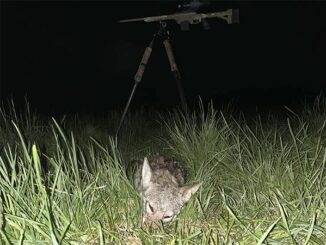
Annual coyote harvest has leveled off, indicating population no longer growing
Coyotes are in South Carolina, and they are not going away. With that in mind, the S.C. Department of Natural Resources is trying to help landowners learn how to deal with the sneaky predators.
“People just want (us) to make the coyotes go away,” Emily Cope, SCDNR’s deputy director of wildlife and freshwater fisheries, told the Natural Resources Board at its August meeting. “We can’t do that.”
What they can do, she said, is provide some ways to help landowners and residents “live wisely with these animals.” She outlined three programs the agency is conducting to deal with coyotes: seminars, predator call competitions and information posters.
Seminars are being conducted across the state in cooperation with Clemson University to show people how to cope with coyotes. Trapping is the most effective management tool, but it takes skill and equipment that most landowners do not have.
Cope told the board she is working with a group that competes in predator calling competitions in hopes they can teach landowners how to call coyotes into gun range, and her staff is creating several posters that provide information on living safely near the animals.
The combination of programs is not designed to effectively reduce the population of coyotes, which apparently has plateaued in the past several years. There is no reliable population estimate, but annual hunter surveys show the annual coyote kill by hunters has leveled off at around 30,000 a year over the past five years.
The hunter kill reached 29,783 in 2009, rose by more than 1,000 the next year and increased to more than 32,000 in 2011, but dropped to slightly more than 28,000 in 2012, and last year the hunter kill was estimated at 30,076.
The first coyotes in the state showed up in Pickens and Oconee counties in the late 1970s, were found in the Pee Dee a decade later and spread statewide by the middle 1990s. Biologists believe the animals were first imported into the state as a substitute for foxes in fox running pens.
A study conducted by SCDNR biologists and others at the Savannah River Site determined the effect of the coyote population there on deer fawn survival. In that specific environment, the scientists determined that 70 percent of fawns born were lost to various causes, but 80 percent of the mortality was attributed to coyote predation.
However, a follow-up study on the effect of coyote trapping showed mixed results, according to Charles Ruth, SCDNR’s deer and turkey project leader. An aggressive trapping program resulted in the doubling of fawn survival in the study areas the first year, Ruth said, but survival fell back to pre-trapping levels the next year and only increased to an intermediate range the third year.
“It’s probably not a bad idea to trap coyotes if you have the means, but very few properties are going to have the commitment and effort we put forth in this study, and we only got moderate results,” Ruth said. “To me, the bigger point is how we manage deer. The coyote is going to be out there, so we need to look at the other side of the equation. We know if we manipulate how we manage deer that deer population is going to respond in one direction or the other.”


Be the first to comment